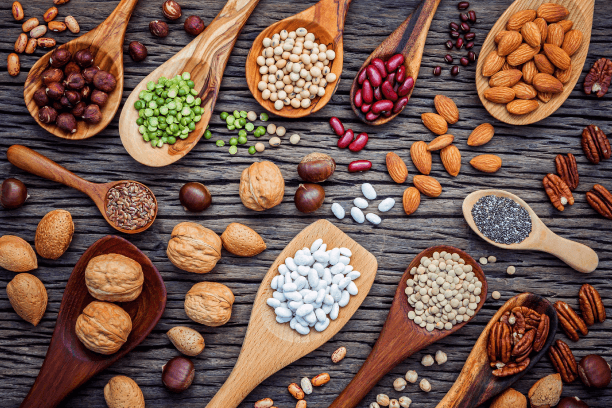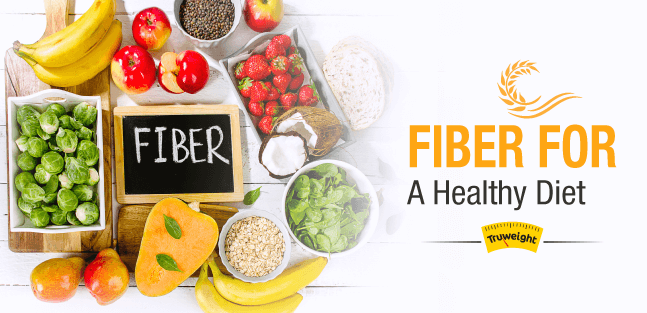Food & Nutrition, Health
How To Add More Fiber To Your Diet- 7 Strategies
Fiber plays an important role in the digestion process, weight-loss management, regulating blood sugar levels, maintaining cholesterol level, and many other things.
Table of Contents
What is fiber?
Fiber is basically a plant-based nutrient and is commonly known as roughage.
They are a type of carbohydrates and are actually “good carbohydrates”. Food items such as grains, nuts, beans, seeds are complex carbohydrates and are rich in fiber.
Fiber plays an important role in the digestion process, weight-loss management, regulating blood sugar levels, maintaining cholesterol level, and many other things.
Some studies have also established a link between fiber and longevity of life as well as reducing the risk of cancer.
There is a recommended amount of fiber intake for both men and women. Men up to the age of 50 should consume 38 grams of fiber every day while women up to the age of 50 should consume 25 grams of fiber per day.
Men above 50 years of age should consume 30 grams of fiber and women above the age of 51 should consume only 21 grams of fiber.
Signs of Less Fiber Intake in the Diet
What are the signs which show that you are consuming less fiber than needed? Let’s find out.
- Constipation- People who consume Less Fiber often face the problem of constipation. The stools are mostly hard and dry during constipation.
- Slight Weight Gain- After finishing the meal, a person may not feel satiated and this can be a cause of weight gain after a short period of time.
- Tiredness- One may feel slightly nauseated or weak even if they are eating nutritious food.
So we now understand why fiber is so important for the body.
Here are a few ways through which you can increase the consumption of fiber.
1. Eating Cereals in Breakfast
Having cereals for breakfast is a good idea. It is light and easy to digest. It is recommended to eat whole grain, unsweetened cereals which have at least 4 grams of fiber per serving.
Eating cereals every day is enough to finish your daily fiber quota. People who eat cereals on daily basis are found to consume more fiber and less fat when compared to non-cereal eaters.
2. Eating Loads of Fruits
We all know the famous saying “An apple a day keeps the doctor away”. Apple is a great fruit for health and also a good source of pectin.
Pectin is basically a soluble fiber and gives a feeling of fullness when consumed. It also digests slowly. Eating apples will keep you satisfied for nearly up to four hours.
Other than that, there are many fruits that can be consumed to increase the fiber intake. Fruits like- guava, mangoes, papaya, melon, banana are rich in fiber. Also, one should keep in mind that eating whole fruits is beneficial and not as juice.
3. Including More Oats In Your Diet
Oats are quite helpful for calorie management. One can do different innovations with oats and eat it in a number of ways. You can eat oats like porridge every day.
One can also make oats flour by toasting it and grinding it in a mixer. This flour can be used to make cutlets or as a substitute of breadcrumbs. Mixing oat flour with whole wheat flour is also a good combination to make healthy chapatis.
4. Adding Beans and Seeds In Your Diet
Beans give you fiber as well as provide you with antioxidants. There is a wide variety of beans which can be used to make curries, soups, and salads.
You can also make hummus and use it to make sandwiches. Including seeds in your daily food is good for health. Seeds such as sesame seeds, chia seeds, and flax seeds can be used in a number of dishes.
5. Green Leafy Vegetables
There is no doubt that green vegetables are a rich source for so many nutrients. Vegetables such as spinach, radish, cauliflower etc are a good source of fiber.
Drumsticks are another type of vegetable that is rich in fiber and should be included in the diet. One can use them in a number of ways to Include them in preparing dishes. You can make stir-fries or add them to your dishes.
6. Adding Millets in Diet
Millet is the best substitute for white rice. They have a better nutrition profile as compared to the rice.
Around 100 grams of millet contains 378 calories and is also rich in proteins, fiber, vitamins, and even manganese.
There are various types of recipes that can be made using millets. They can be prepared with readily available ingredients. Millet is quite good in taste and will benefit you a lot.
7. Eating Nuts and Legumes
While eating seeds is a great way to increase your fiber intake, consuming nuts and Legumes is another tasty way to add more fiber.
One should make sure to consume nuts at least a few times in a week.
Peanuts, pistachios, almonds, sunflower seeds- these are some great sources to get your dosage of fiber. Approximately 10 almonds have around 4 grams of fiber in it.
Not only nuts are rich in fiber, but they are also a rich source of protein and omega 3 fats.

8. Drinking lots of water
One should remember to drink lots of water if they are working on increasing fiber consumption. Also, the process of increasing fiber consumption should be done gradually in order to avoid bloating or any other type of discomfort related to this.
Conclusion
Adding fiber-rich food in diet will help in managing the bowel movement.
People with severe constipation problem must take the above suggestions seriously and try to follow it. They will definitely see a change. Other than that, it also has many other health benefits.
It helps in keeping the heart healthy as well and also reduces the risk of stroke. It helps in regulating the digestion process and also keep the blood sugar levels in check.
People who are on a weight management program should increase the fiber intake in their diet.
It will keep your stomach full without creating an urge for unnecessary cravings. Try the above benefits and it will definitely help you a lot.
FREE CONSULTATION with a Possible Nutritionist
